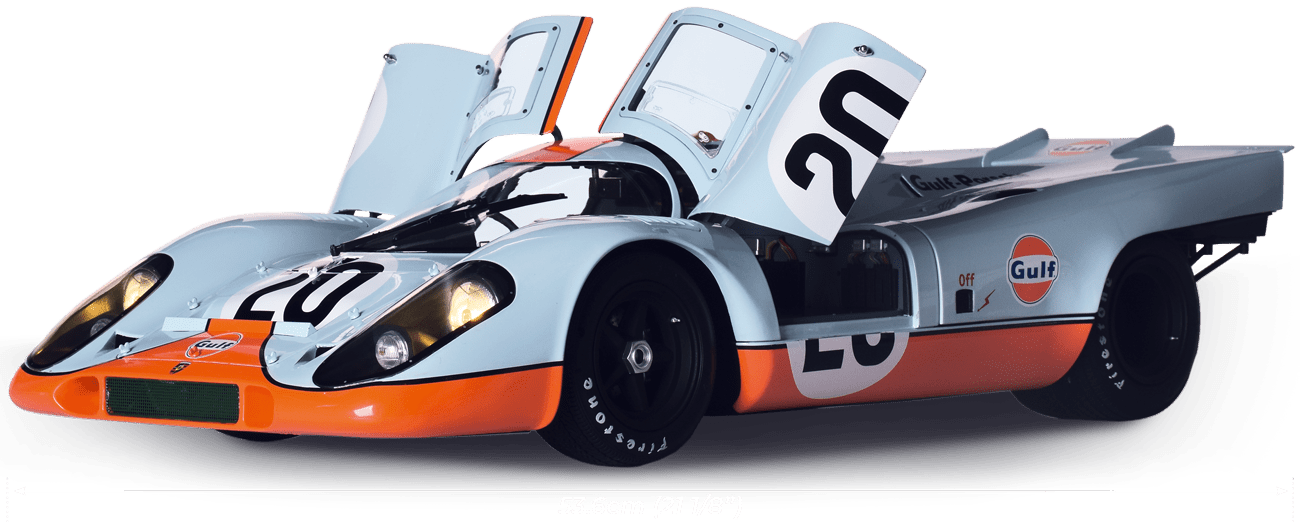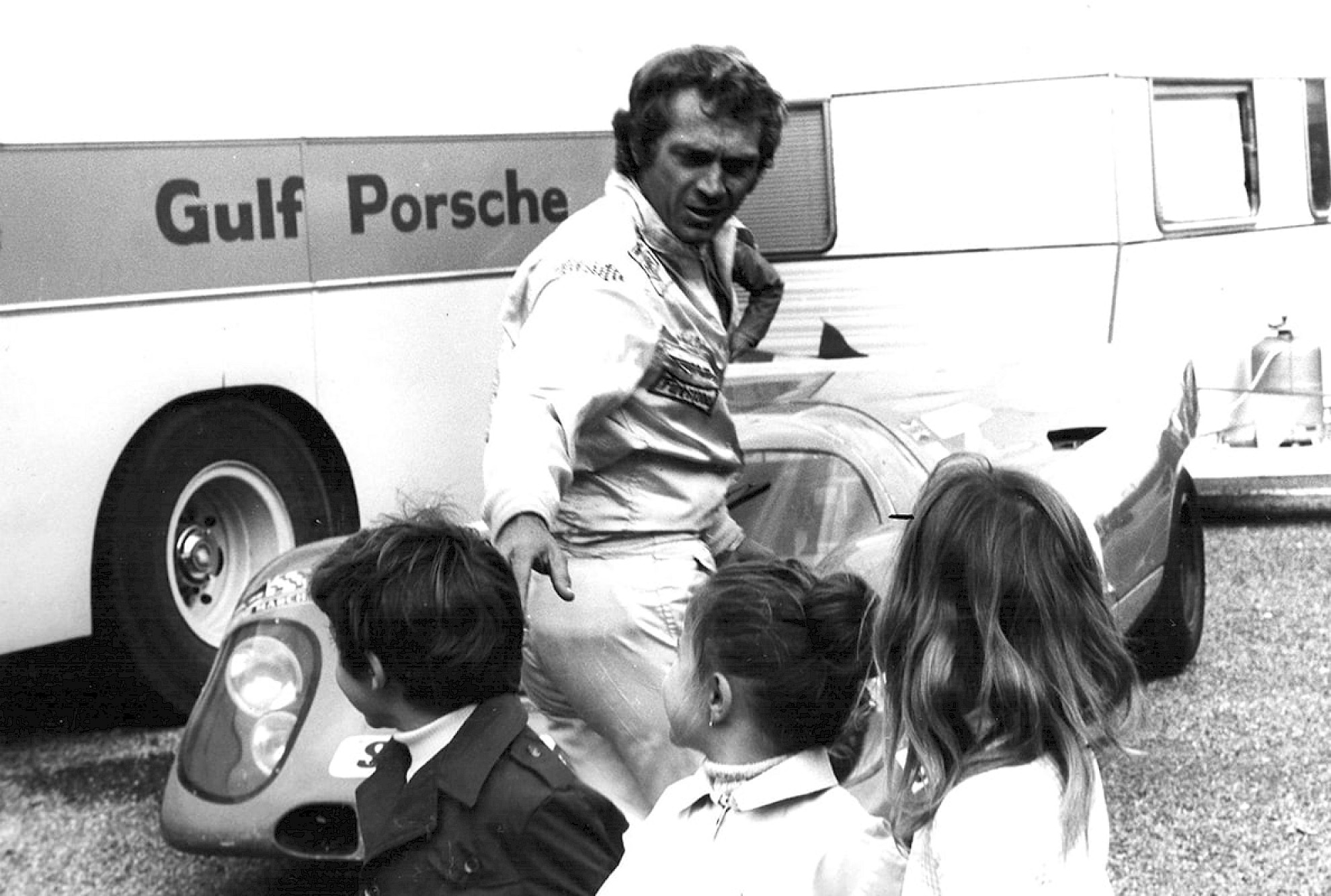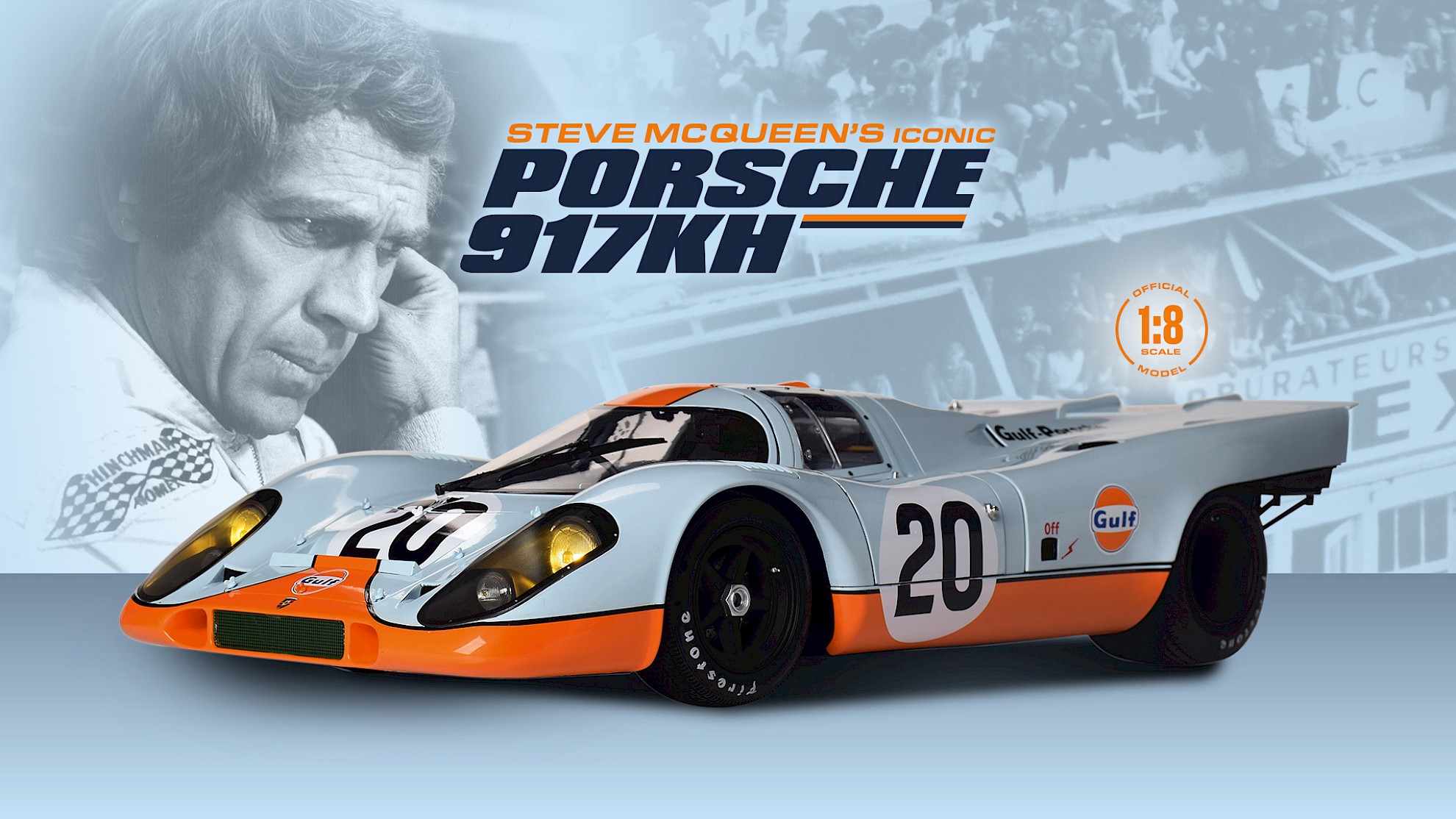
“Racing is life.
Everything that happens before or after
is just waiting.”
Michael Delaney (Steve McQueen)
In Gulf Oil’s famous sky-blue and orange livery, this is arguably the most iconic 917 of all time.
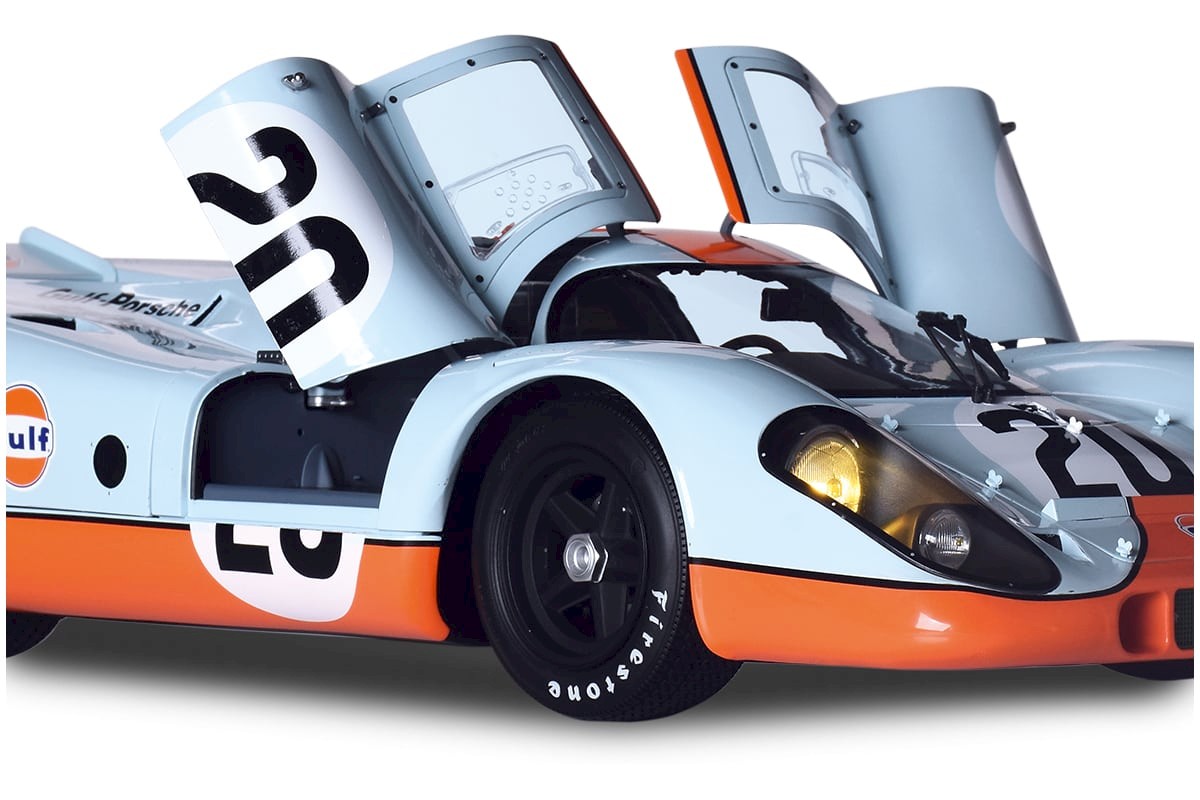
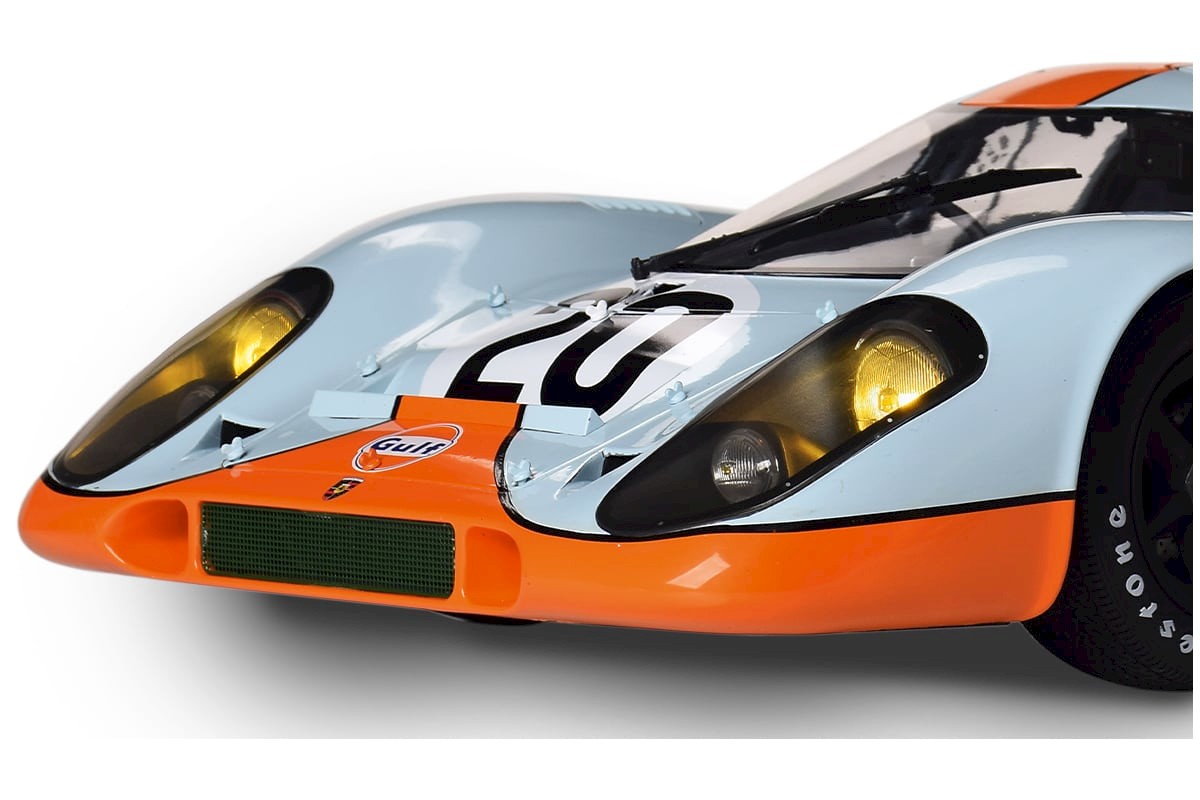
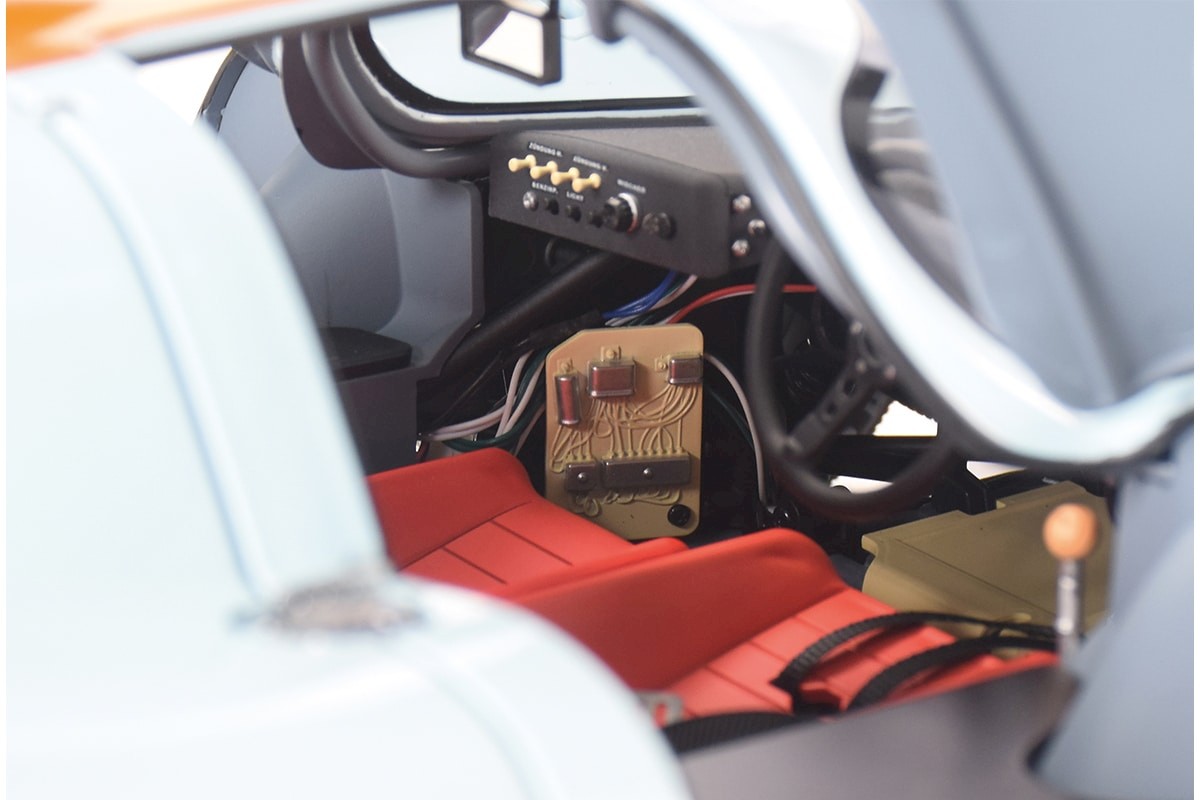
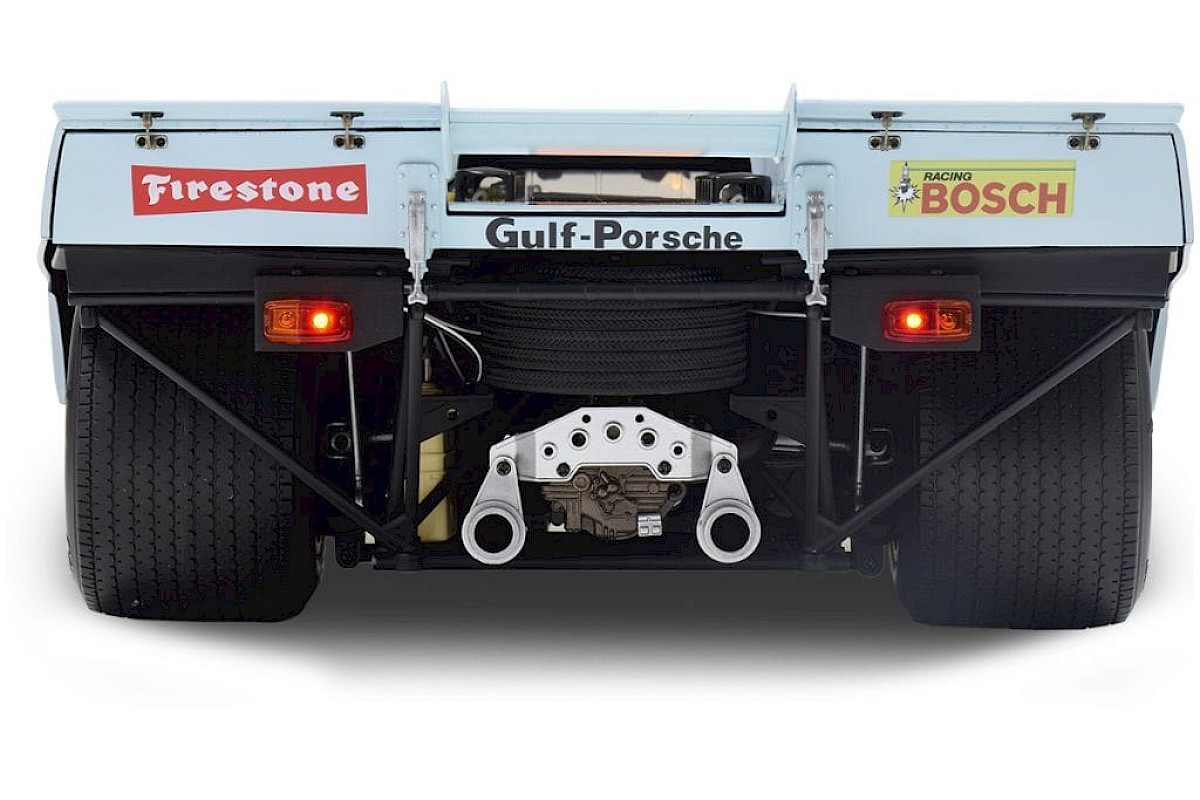

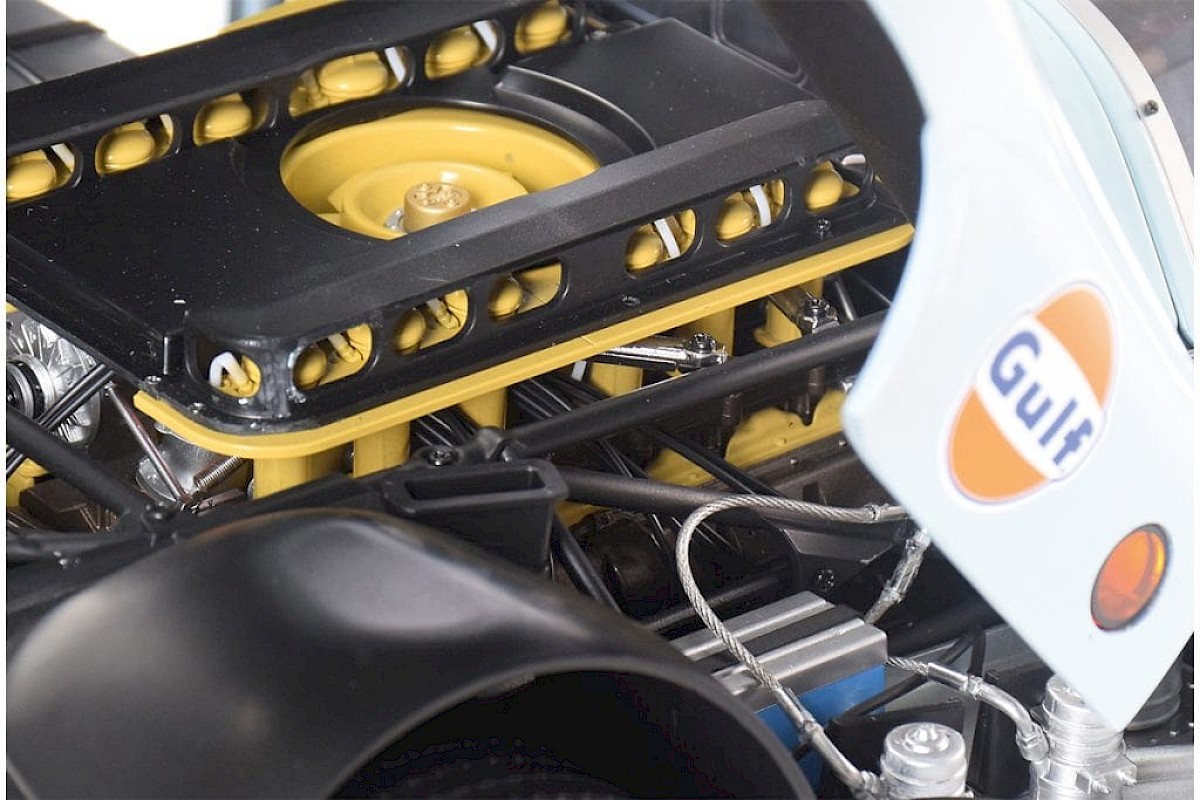

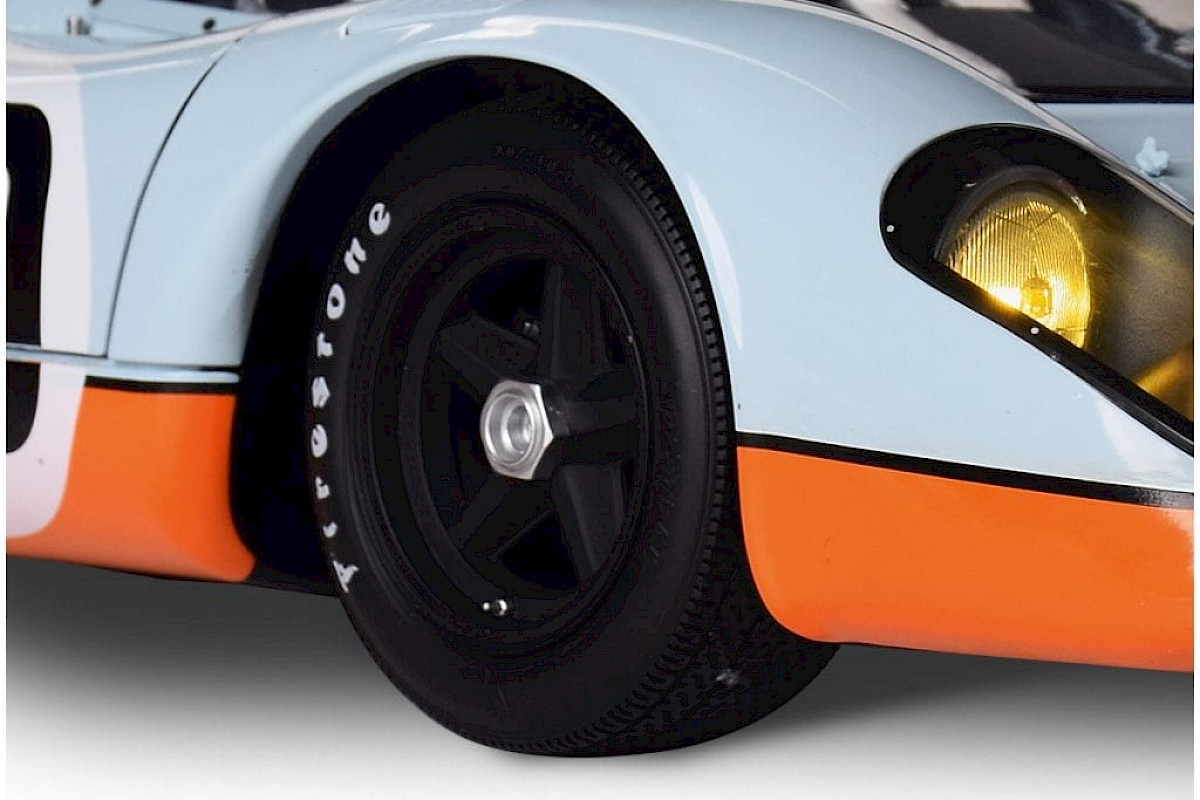
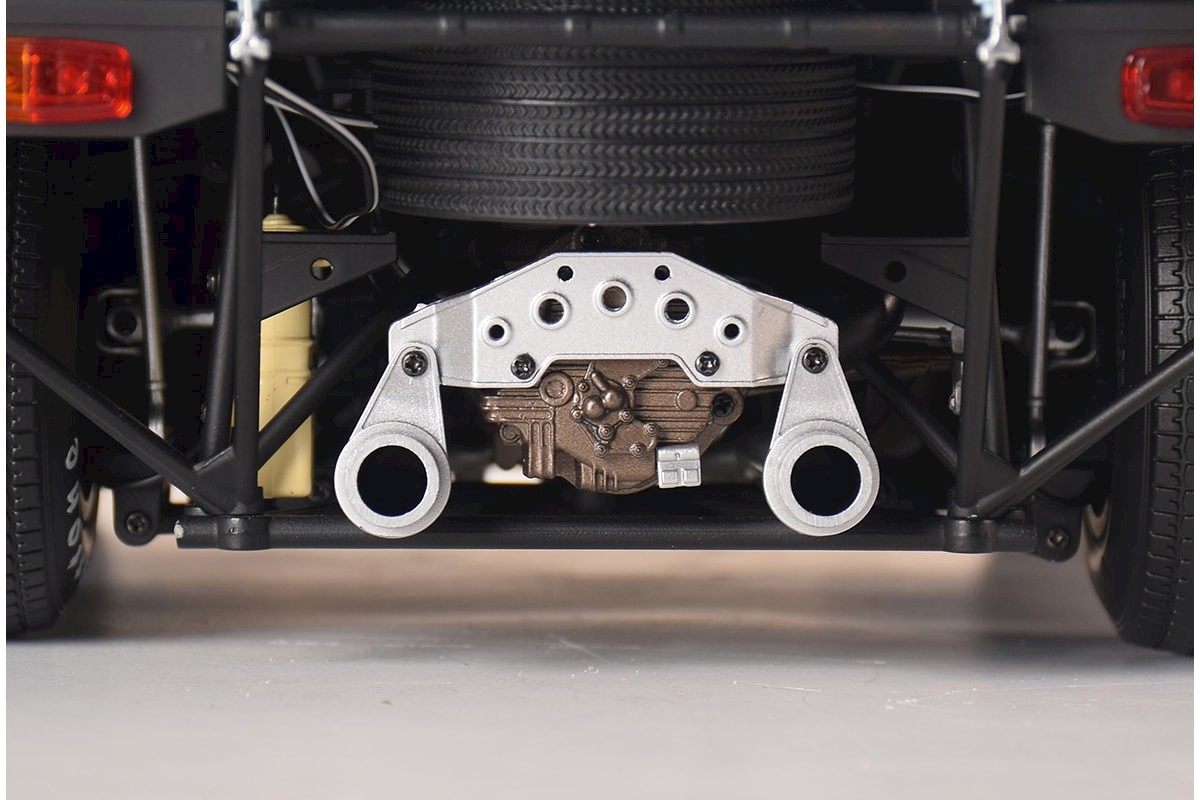
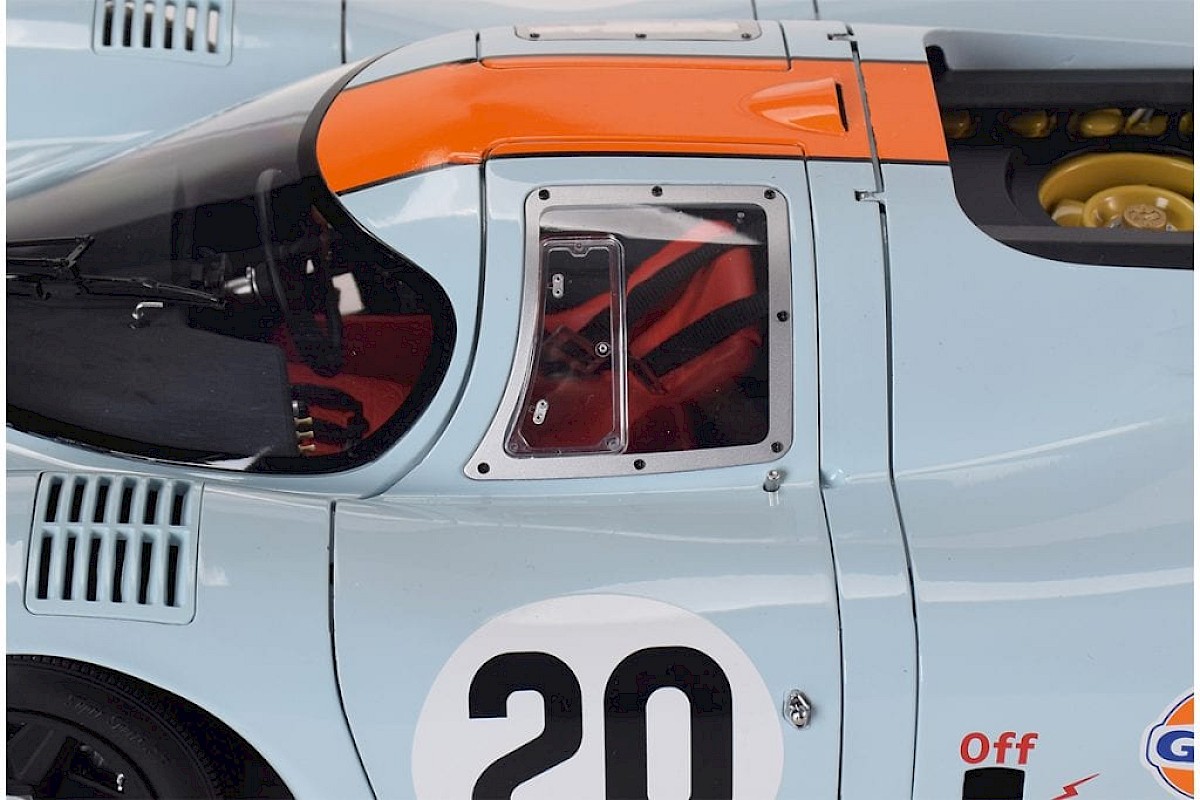
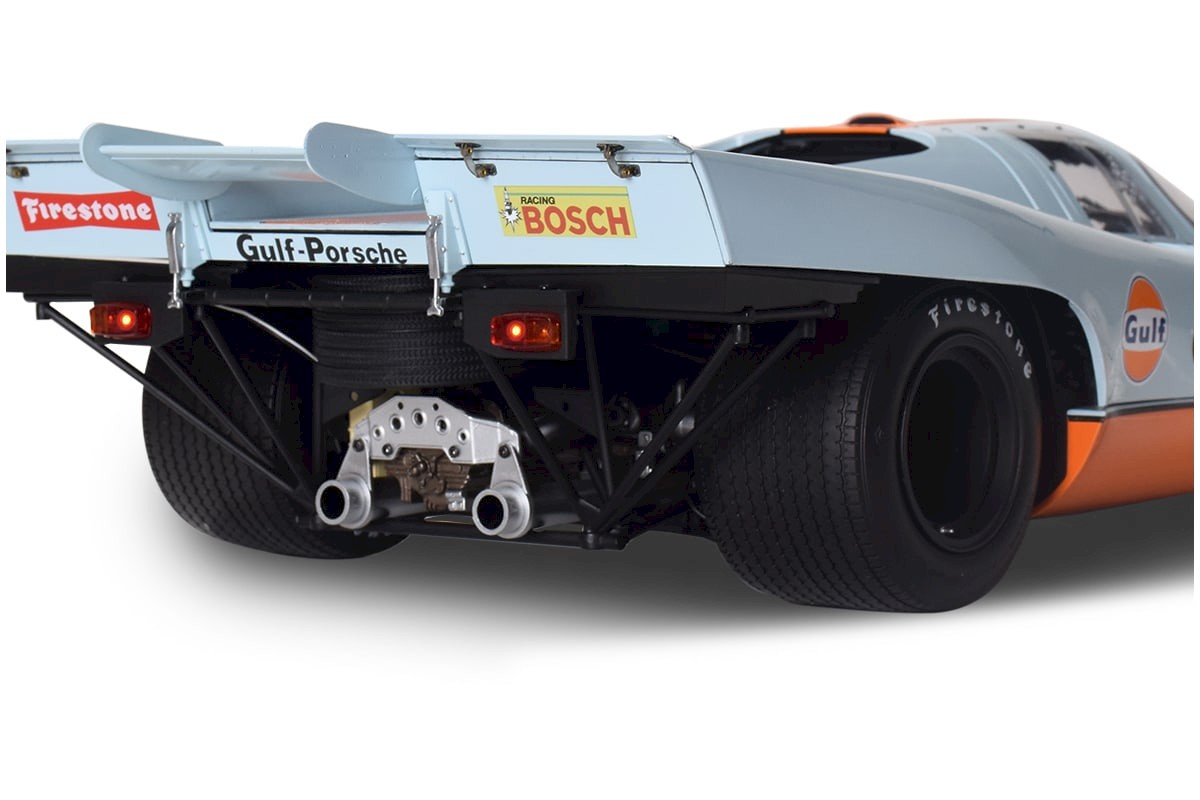
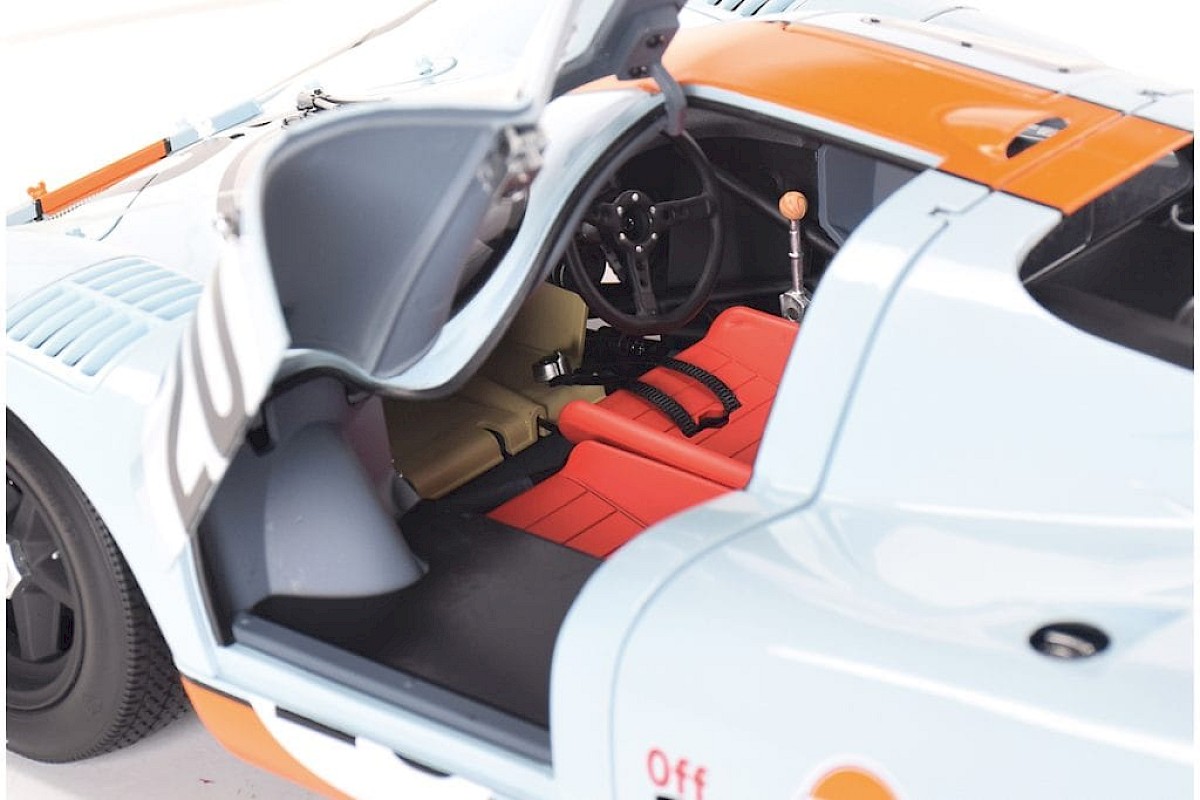


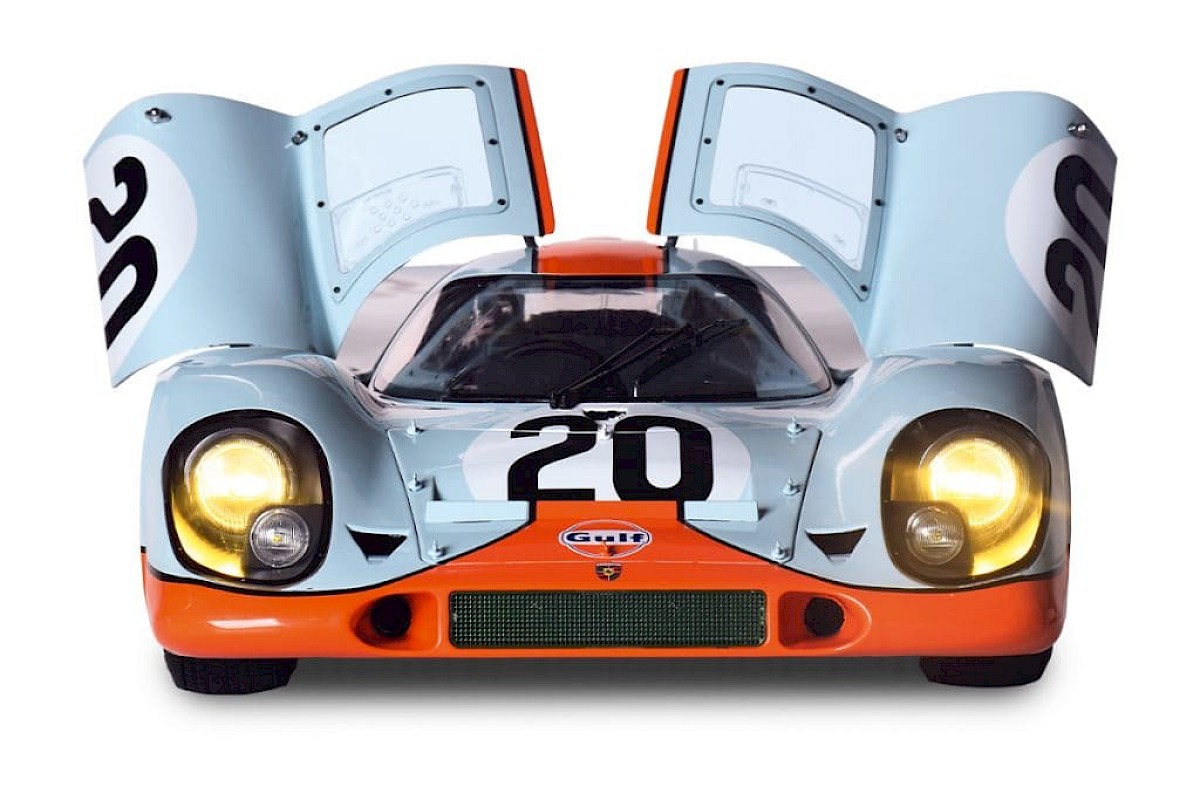

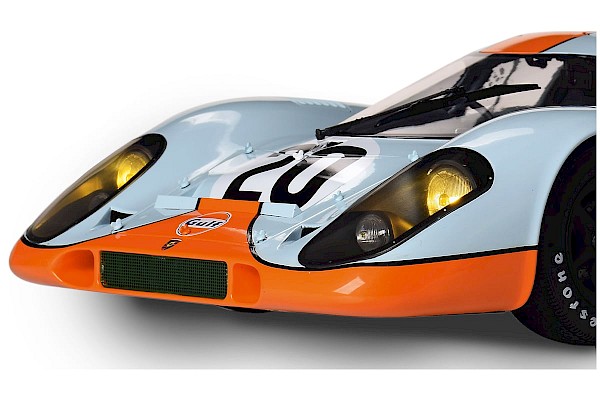


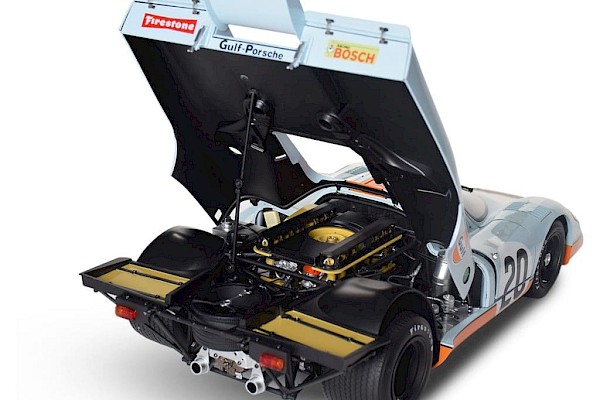

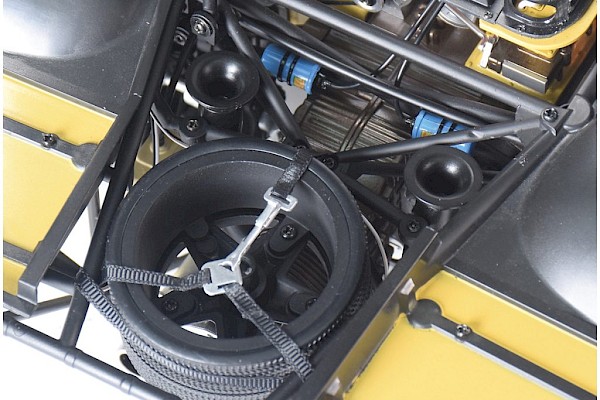

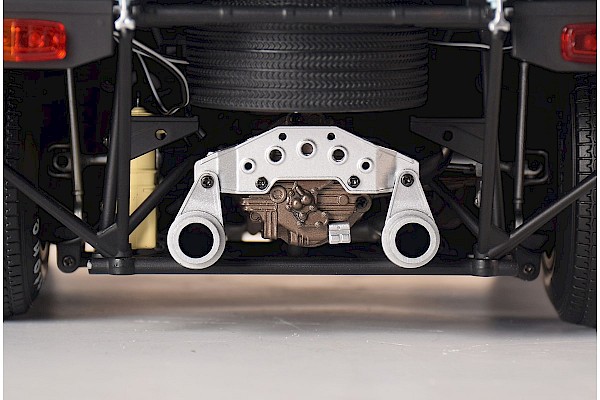
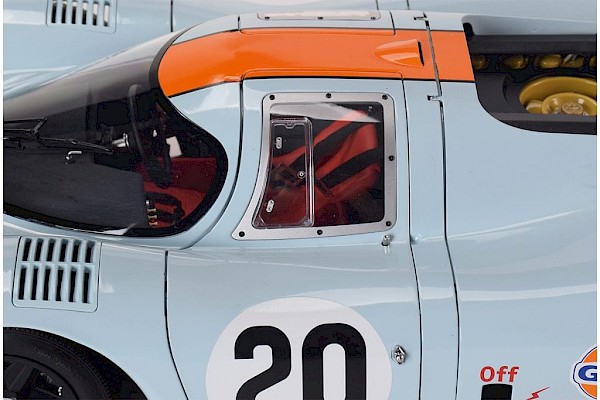
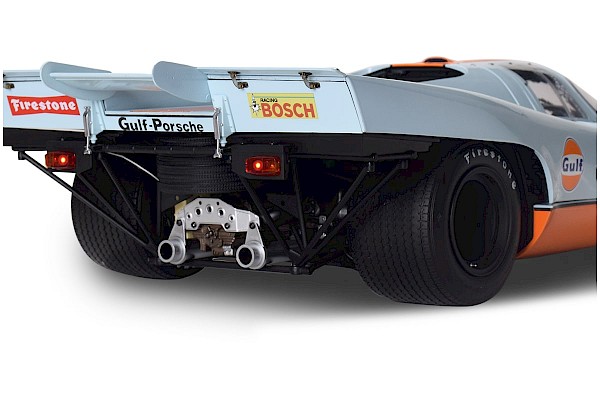
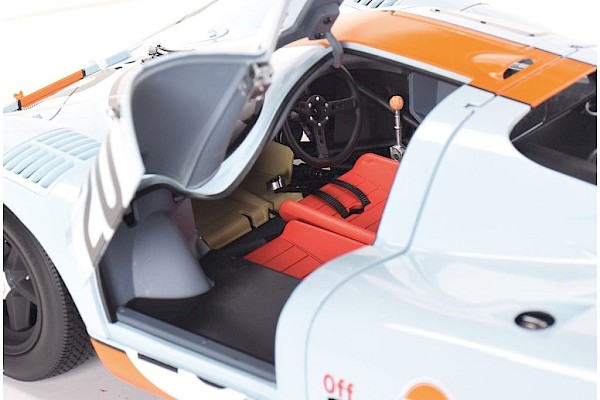


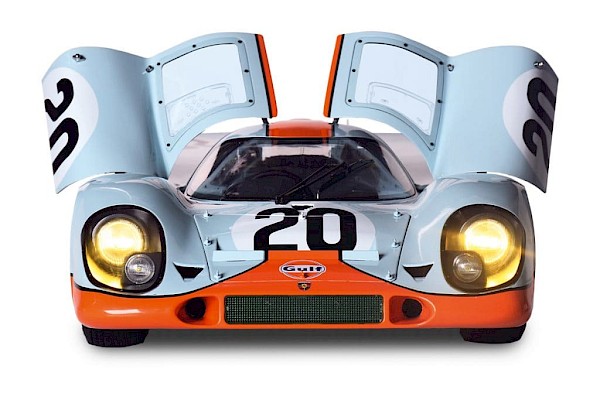
Specification & Features
The Porsche 917 is a racing legend – the most powerful and fastest Porsche race car to date with an air-cooled twelve-cylinder engine whose power in 1970 was an imposing 580 hp at 8,300 rpm. With an impressive racing record, the 917 is responsible for turning the German brand into a force that dominated the endurance racing scene from the early 1970s until the mid-1990s.
Specification
Length: 21 1/8“ (536mm)
Width: 10″ (254mm)
Height: 5″ (130mm)
Height with tail open: 10-15″ (260-350mm)
Scale: 1:8
Materials: This die-cast metal model includes electronics and ABS parts.
Number of parts: 600 approx.
All parts come ready-painted – no painting required
Features
- Faithfully reproduced flat 12-cylinder engine
- Butterfly doors open to display the cockpit
- Working steering wheel turns the wheels
- Active suspension
- Fully operating headlights, rear and interior lights
- Firestone racing tires
- Opening tail to reveal the engine, with two fixing positions
It's all in the detail
Outstanding detail at 1:8 scale

BUTTERFLY DOORS
Opening butterfly doors reveal the interior

SWITCHES
Dashboard with Dymo-labelled switches
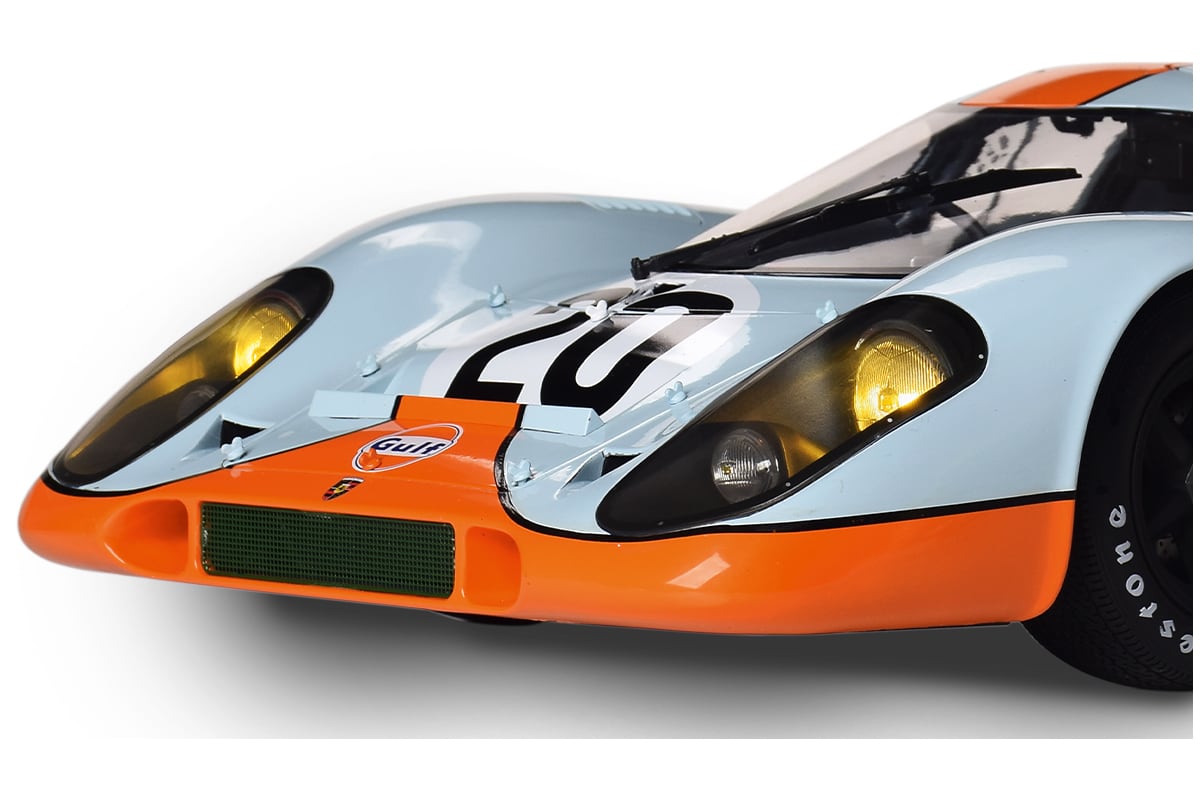
WORKING ELECTRICS
Functioning headlights

DIECAST METAL PARTS
Made from high-quality materials including die-cast metal, photo-etched and ABS parts

AUTHENTIC ENGINE
Boot opens to reveal the realistic flat 12-cylinder engine

FUNCTIONING TAILIGHTS
Pushing the brakes illuminates the brake lights
Video
World of Wayne Review
Pack 1 build
Detail video
Le Mans (1971) ORIGINAL TRAILER
Your buying options
When you place your order we will send your first pack with the first stages of your kit to build your model. Following this, you will be sent another pack every month for 11 months. You will be charged monthly.
Alternatively, you may choose a Full Kit, Accelerator or the 24-month plan
click here for more details.
We ship worldwide.
Display Case
Include a Display Case by spreading the cost across your monthly Packs. Add $16.58 per month to include Display Case.
Simply choose the ‘+Case’ option button below.

Pack 1 only $74.99
then $149.99 per month
Add $16.58 per month to include Display Case

Pack 1 only $74.99
then $79.99 per month

PACKS 1–6 – $799
then $149.99 per month (+S&H)

Packs 1-12 $1,599
Get it all at once!
The Story of the Porsche 917KH
A Racing Icon
There were 12 chassis of the Porsche 917KH built between 1970 to 1971. Your model is based on chassis 917-022. First built in 1969, it was converted to a Kurzheck (KH) model for the 1970 race season. The car was then purchased by Steve McQueen’s production company for the filming of Le Mans.
After filming, the car was raced in the 1971 season by Reinhold Joest and co-driver Willi Kauhsen. In 1975, Brian Redman purchased the car he had raced alongside Jo Siffert in 1970 at Le Mans. A few years later, it was sold to the 1970 Le Mans winner Richard Attwood, who showcased the 917KH at various events.
Birth of a Legend
When the Commission Sportive Internationale (CSI) announced that the International Championship of Makes for 1968 to 1971 would be run for three-litre Group 6 prototypes, Porsche set out to take advantage of the new ruling with one goal in mind: to win its first overall victory in the 24 Hours of Le Mans.
Under the leadership of Ferdinand Piëch and Helmuth Bott, the Porsche 917 was designed by chief engineer Hans Mezger, who crafted a new 4.5-litre air cooled engine for the project. Many other innovative design features were used to reduce the weight and accommodate a larger engine, such as the tubular frame of the car itself being used to pipe oil to the front cooler.
The initial performance of the 917 at Le Mans in 1969 was not what Porsche had wanted, but this was quickly rectified the following year in the 1970 competition. During testing, the chief engineer of the John Wyer Automotive (JWA) Gulf Team – John Horsman – had spotted a pattern of dead gnats on the bodywork of the car. The tail of the 917 was clean, revealing that the air was not flowing over the tail. As a result, a modification was made that gave the 917 a shorter tail and much needed downforce.
The new model was called the 917KH, the Kurzheck (or “short tail”).
On Saturday June 13th, 1970, JWA entered Le Mans with the 917KH in three different versions of Gulf Oil’s famous livery: sky blue with an orange stripe that ran on the front and underbody for Jo Siffert-Brian Redman (#20), sky blue with an orange stripe for Pedro Rodríguez-Leo Kinnunen (#21) and sky blue body and orange roof for David Hobbs-Mike Hailwood (#22). Considered some of the favourites, they had qualified third (#20), fifth (#21) and 10th (#22), but were forced to retire mid-race, with engine troubles for Rodríguez and Siffert after 4 hours and 12 hours respectively, and an incident for Hailwood 5 hours in.
The race was won by Richard Attwood and Hans Hermann in their Porsche 917KH for the Porsche Salzburg team. Porsche had achieved their overall victory at Le Mans.
At the same time, filming was underway for Steve McQueen’s newest film – Le Mans – which aimed to be the ultimate racing movie about the world’s greatest race. The team behind the film had developed new ways to film cars and been granted permission to set up camera crews to film the 1970 Le Mans competition. Using the footage they had of the actual race, the film was a combination of real-race and choreographed stunt-driver shots to bring McQueen’s vision to life.
Solar Productions, McQueen’s production company, purchased a 917KH (Chassis 917-022) for the film, while Jo Siffert loaned McQueen his own (Chassis 917-024-2), catapulting the car to stardom when the film released in 1971. In the same year, 917-024-2 led the funeral procession upon Jo Siffert’s untimely and unfortunate death, before being sold to a private collector. Following the sale, the car then disappeared for nearly 30 years.
In 2001, the 917-024-2 resurfaced after being discovered in a shed in the French countryside. Almost entirely unchanged from its time in Siffert’s care – with even the original space-saver spare, Firestone fuel cell and Firestone Super Sports GP tyres still in place – this was undoubtedly one of the greatest barn finds ever. Following a full restoration courtesy of specialists Graber Sportgarage in Switzerland, the Porsche 917KH was sold at auction in California for a record-breaking $14,080,000 (£10,421,909) on the 18th of August 2017.
Technical Specification
Car type: 2-door Kurzheck (short-tail) sports prototype race car
Dry weight: 820 kg (1808 lbs)
Dimensions: 4120 mm (162.2″) long, 1880 mm (74″) wide, 920 mm (36 1/4″) high
Wheelbase: 2300 mm (90 9/16″)
Power: 572 bhp (580 CV)
Engine type: Porsche Type 912-00, flat 12-cylinder
Displacement: 4494 cc
Transmission: 4-speed manual Porsche
Layout: rear mid-engine, rear-wheel drive
Top speed: 211 mph (340 km/h)
Trivia from the film
Being a car-racing fanatic, Steve McQueen wanted to drive in the 24 Hours of Le Mans but was denied permission by the film’s producers. However, his Porsche 908 did participate in the race with three cameras strapped on to shoot the “live” footage for the film. Despite the frequent stops to change film roll, the altered aerodynamics and the additional weight, the car managed to finish ninth. However, it was not classified in the standings as it had not covered the required minimum distance due to the stops to change reels.
Originally Steve McQueen had asked John Sturges to direct, but the two couldn’t agree on the direction for the film. Sturges wanted to make a more conventional Hollywood picture that focused on the relationships of the drivers and concluded with an upbeat ending, while McQueen was more interested in making a racing documentary that made the cars the stars of the film. Lee H. Katzin directed the film, which famously features no audible dialogue from any of the characters for the first 37 minutes of the movie.
Following Warner Bros cancelling their deal with McQueen, Cinema Center Films took over production. They considered shutting down the project completely, but eventually struck a deal with Steve McQueen who gave up his salary, his percentage of any profits and his control of the film in order to get it finished.
You may also like...




